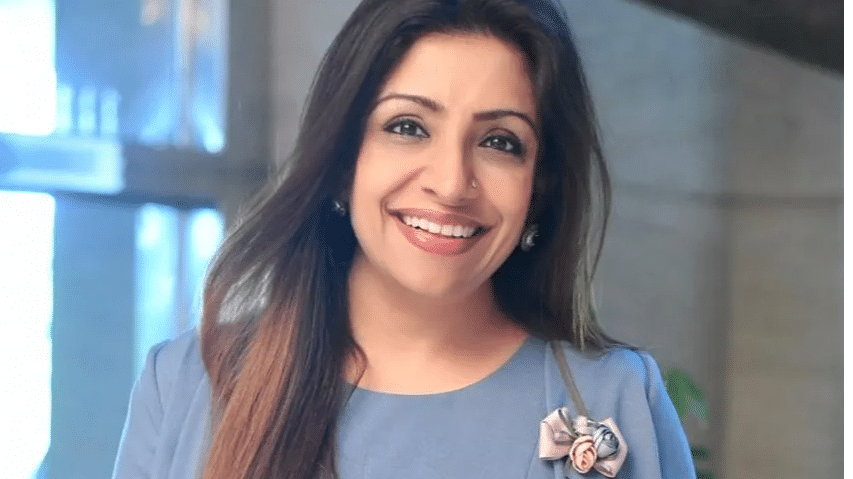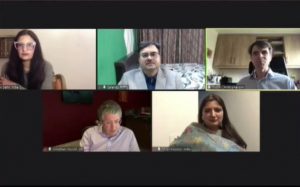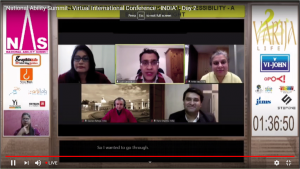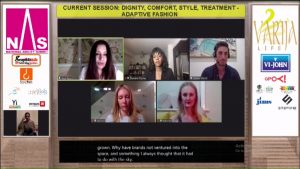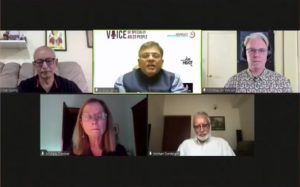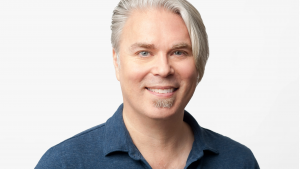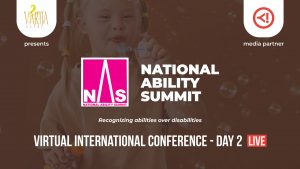“Greetings
from Varija Life and a very warm welcome to our viewers who are and will be
joining us from all over the world over these two days,” fashion designer
Varija Bajaj kicked off the two-day virtual event of the first-ever National
Ability Summit on December 2.
She
is the convenor and one of the key speakers at the event that will see the
participating of over 50 speakers from 6 countries focusing on one common
mission is Disability Inclusion.
Some
of the key points of the discussion at the event include Employment and Human
Resource for People With Disabilities (PWD), Assistive Technology, Mental
Health, Adaptive Clothing, Art and Films for and by PWD, Digital Accessibility,
Infrastructural Accessibility and Startups focusing on mental and physical
needs of People with Disabilities( PWD).
“For
those who know me and even those who don’t know me always questioned my
interest in disability? ,” said Bajaj adding that her exposure to disability
happened 16 years ago when she started her career as a fashion designer.
“While
I was trying to understand design from the scientific perspective, I wondered
that if I am blessed to design for people who can speak, I may be blessed to
design clothes for people who may not be able to speak. I may be blessed to
understand their needs, their psychology, and render that into my creations,”
she said.
She
further said that while she found very little literature on adaptive clothing,
she has realized then and even now, after 16 years, that special children or
children with disabilities going to school, wear uniforms that you and I
wear.
Also Read| First ever National Ability Summit in India to take place from December 2
“Uniforms
that have a high level of polyester, which make them high on durability and low
on maintenance. Not realizing that most of these children have very sensitive
skin. Many of these hyperactive children sweat profusely, but polyester does
not let their skin breathe therefore making them even more irritable and
hyperactive,” she said.
“
And it made me further wonder why most fashion designers and fashion schools
primarily focus only on glamour and red carpet, Hollywood and Bollywood,” added
Bajaj by adding that she has opened a “pandora’s box”.
“…because
it wasn’t then just about clothing. It was accessibility, inclusion,
employment, skill development for persons with a disability, assistive
technology, and now digital inclusion or if I can emphatically say a basic
human right to belong, to be included, and to be the way just as you are with
pride,” she said.
Giving
reference to her own life, she said that her father’s old age made her realize
that at some point of our life we all will be disabled.
“As
a self learned interior designer I observed that there was very little emphasis
on functionality and accessibility in infrastructural design…
“India
is called the youngest nation today, with the largest amount of youth in India.
Not realizing that very soon this youth will become old and we would be the
oldest nation in the world and contribute to maximum old-age disability. Not
sure if we are ready infrastructurally or even otherwise. We shall hear the
experts speak on infrastructural accessibility,” she said.
In
the time of the pandemic, the world has changed overnight from real to virtual
reality and so is the consumer demands and their preferences but what about
those who are disabled?
Bajaj
elucidates, “People are working from home with absolute digital dependence.
Give a moment to think for those who can’t speak, or see or hear. How would
they be part of our lives? How many of our google meets, zoom calls or web ex
meetings have sign language interpreters or close captioning? How many of us
even know what is close to captioning ?”
Is
digital exclusion leaving a large chunk of the population being unemployed ?
she asks.
Giving
reference to films, she said that was a film called ‘Tare Zameen Pe’ in Inda,
that told us what Dyslexia is all about.
“Today
every mother is paranoid if their child is writing in the opposite direction.
If such is the power of films, what is stopping the film fraternity across the
world. Sensitization and awareness through films, media, and community support
can accelerate the efforts in disability inclusion,” she said.
While
the governments, health sector, NGO’s, public and private organizations around
the world are trying to crack the right formula for disability inclusion, we
all are far from achieving it. But I also believe it is possible if we all come
together, she ends her speech by saying that “It’s not them vs us. It
is US together.”

